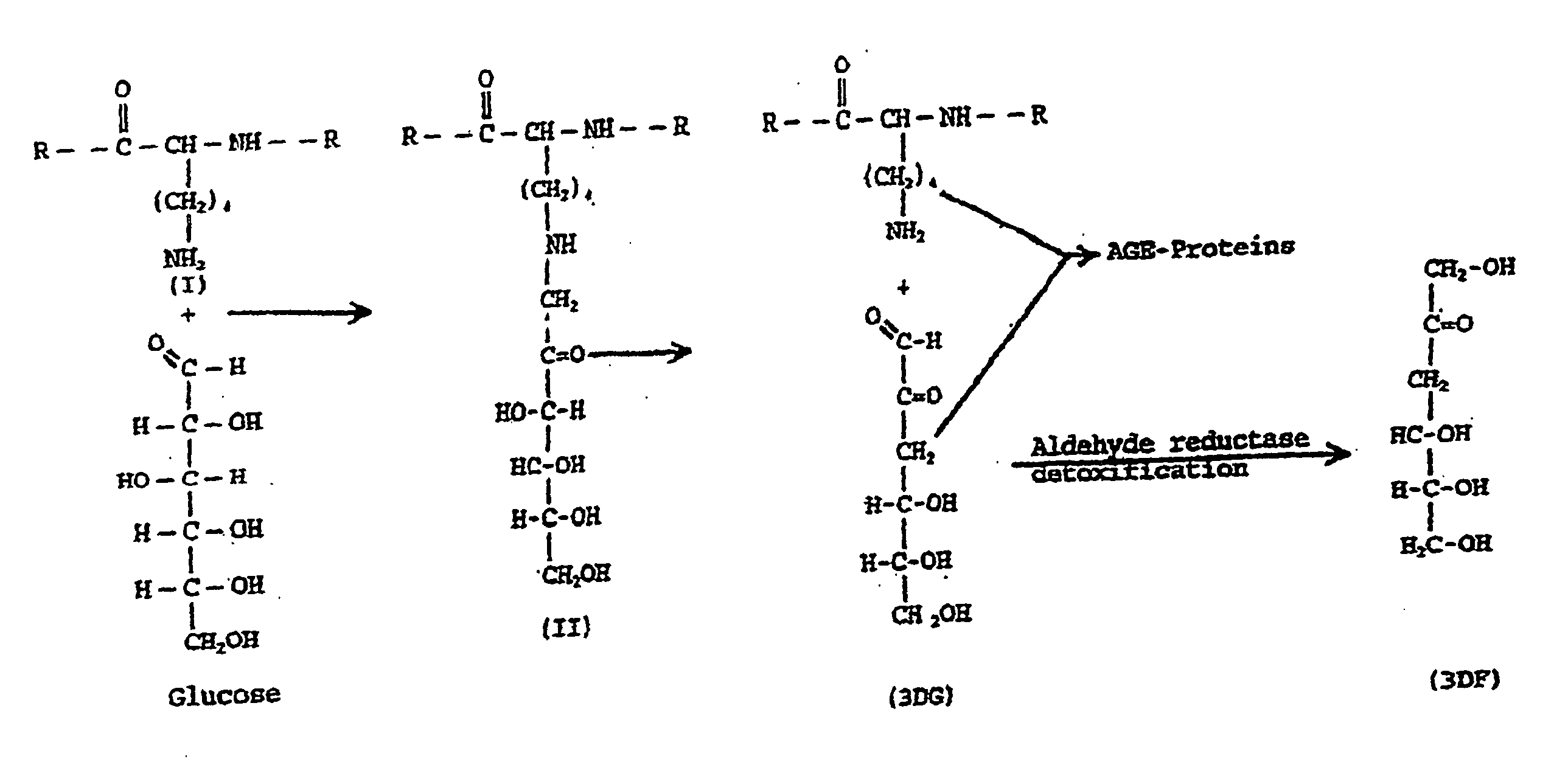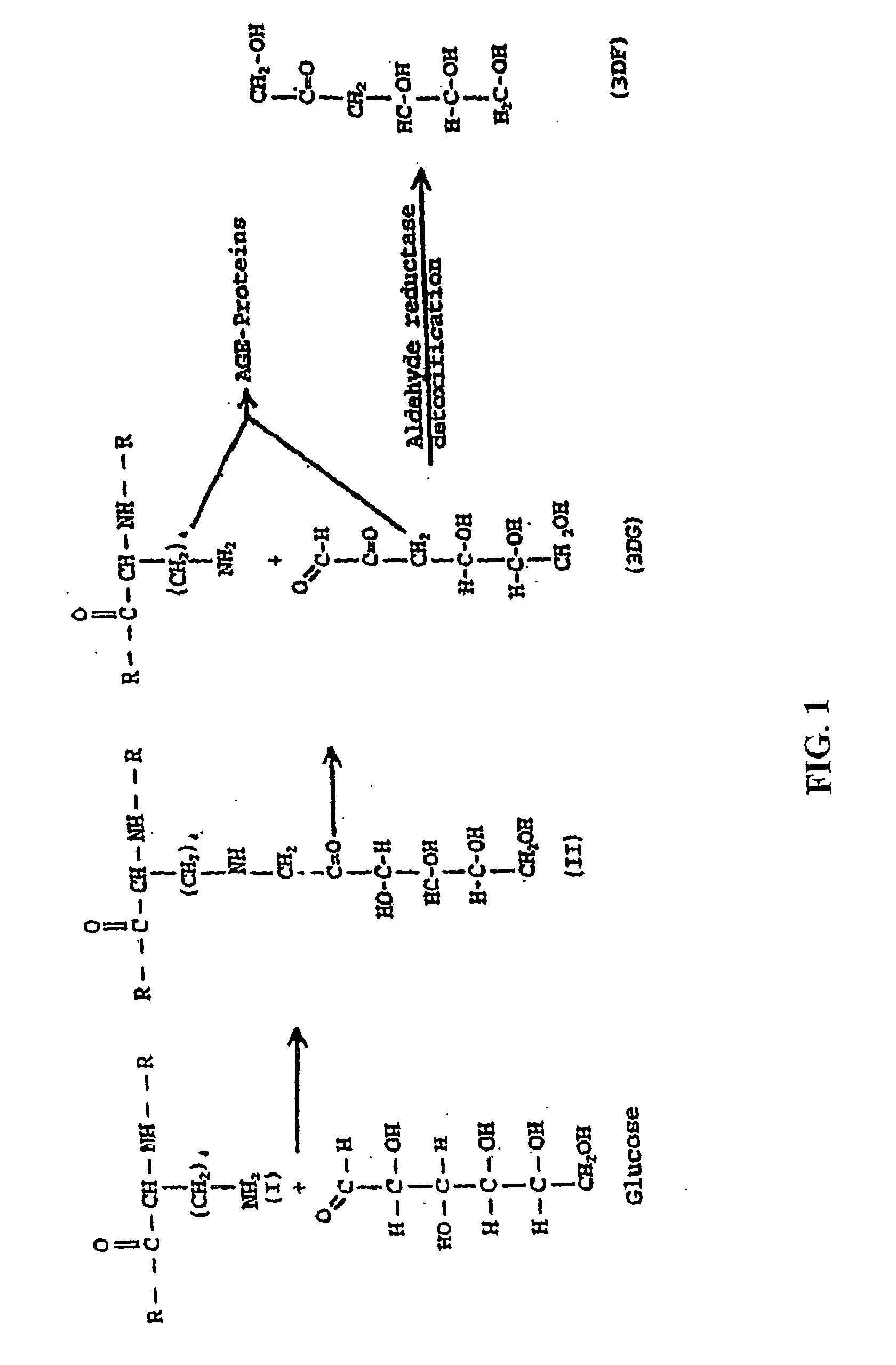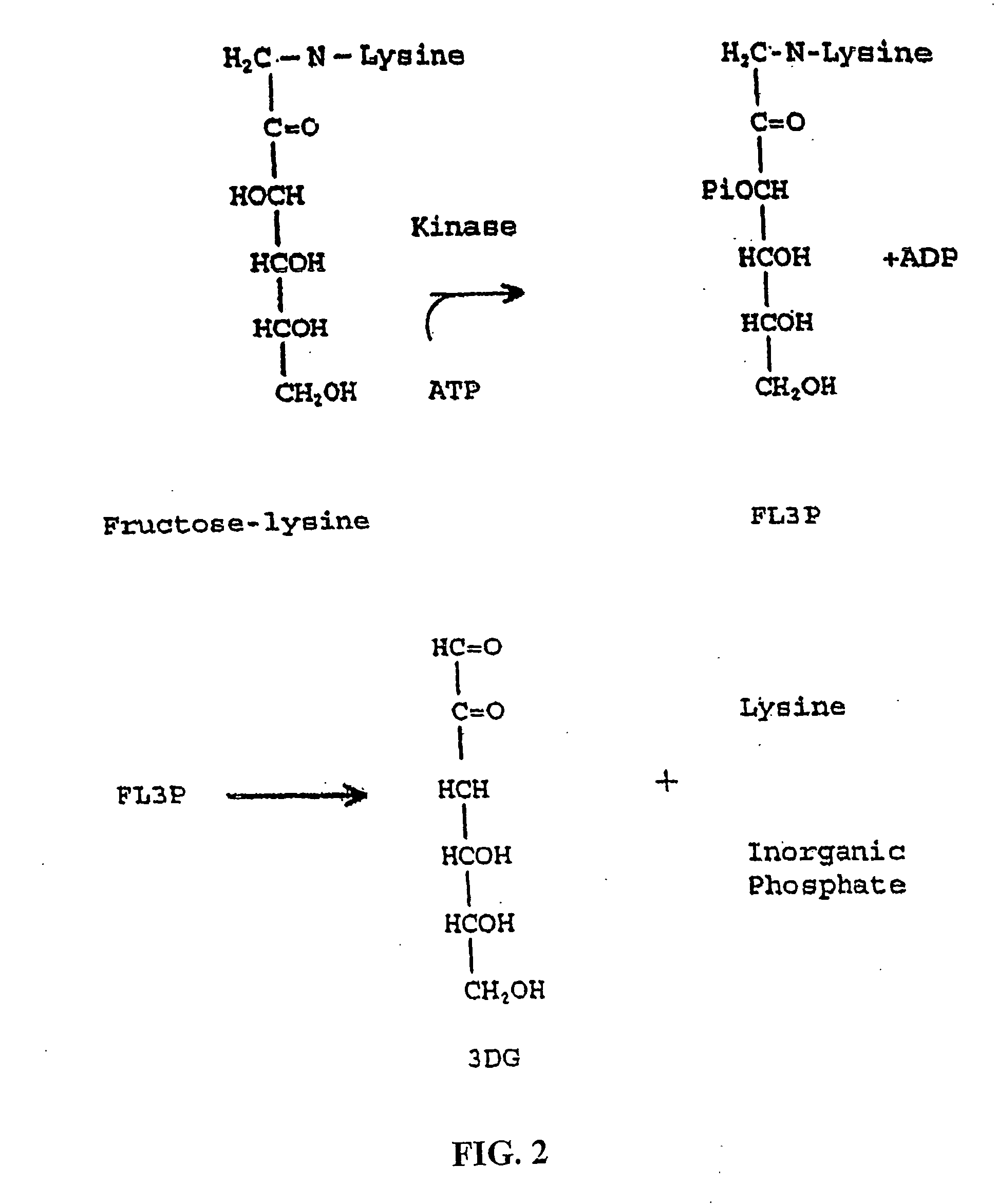Fructoseamine 3 kinase and the formation of collagen and elastin
a kinase and elastin technology, applied in the field of fructoseamine 3 kinase and the formation of collagen and elastin, can solve the problems of increasing the collagen in the heart, reducing cardiac function, giving rise, and reducing so as to increase the flux through the amadorase pathway and reduce the level of mrna
- Summary
- Abstract
- Description
- Claims
- Application Information
AI Technical Summary
Benefits of technology
Problems solved by technology
Method used
Image
Examples
experimental examples
[0499] The invention is now described with reference to the following Examples. These Examples are provided for the purpose of illustration only and the invention should in no way be construed as being limited to these Examples, but rather should be construed to encompass any and all variations which become evident as a result of the teaching provided herein.
example 1
Isolation and Identification of FL3P:
[0500] The following assays were performed in order to verify that fructoselysine (FL) could be identified in its phosphorylated state, e.g., FL3P. A 31P NMR analysis of a perchloric acid extract of diabetic rat kidneys was performed and showed a new sugar monophosphate resonance at 6.24 ppm which is not observed in non-kidney tissue and is present at greatly reduced levels in non-diabetic kidney. The compound responsible for the observed resonance was isolated by chromatography of the extract on a microcrystalline cellulose column using 1-butanol-acetic acid-water (5:2:3) as eluent. The structure was determined by proton 2D COSY to be fructoselysine 3-phosphate. This was later confirmed by injecting animals with FL, prepared as previously described (Finot and Mauson, 1969, Helv. Chim. Acta, 52:1488), and showing direct phosphorylation to FL3P.
[0501] The use of FL specifically deuterated in position-3 confirmed the position of the phosphate at...
example 2
Synthesis of FL3P:
[0502] 1 mmol of dibenzyl-glucose 3-phosphate and 0.25 mmol of α-carbobenzoxy-lysine was refluxed in 50 ml of MeOH for 3 hours. The solution was diluted with 100 ml water and chromatographed on a Dow-50 column (2.5×20 cm) in the pyridinium form and eluted first with water (200 ml) and then with 600 ml buffer (0.1M pyridine and 0.3M acetic acid). The target compound eluted-at the end of the water wash and the beginning of the buffer wash. The results demonstrated that removal of the cbz and benzyl blocking groups with 5% Pd / C at 20 psi of hydrogen gave FL3P in 6% yield.
PUM
| Property | Measurement | Unit |
|---|---|---|
| diameters | aaaaa | aaaaa |
| temperature | aaaaa | aaaaa |
| w/w | aaaaa | aaaaa |
Abstract
Description
Claims
Application Information
 Login to View More
Login to View More - R&D
- Intellectual Property
- Life Sciences
- Materials
- Tech Scout
- Unparalleled Data Quality
- Higher Quality Content
- 60% Fewer Hallucinations
Browse by: Latest US Patents, China's latest patents, Technical Efficacy Thesaurus, Application Domain, Technology Topic, Popular Technical Reports.
© 2025 PatSnap. All rights reserved.Legal|Privacy policy|Modern Slavery Act Transparency Statement|Sitemap|About US| Contact US: help@patsnap.com



